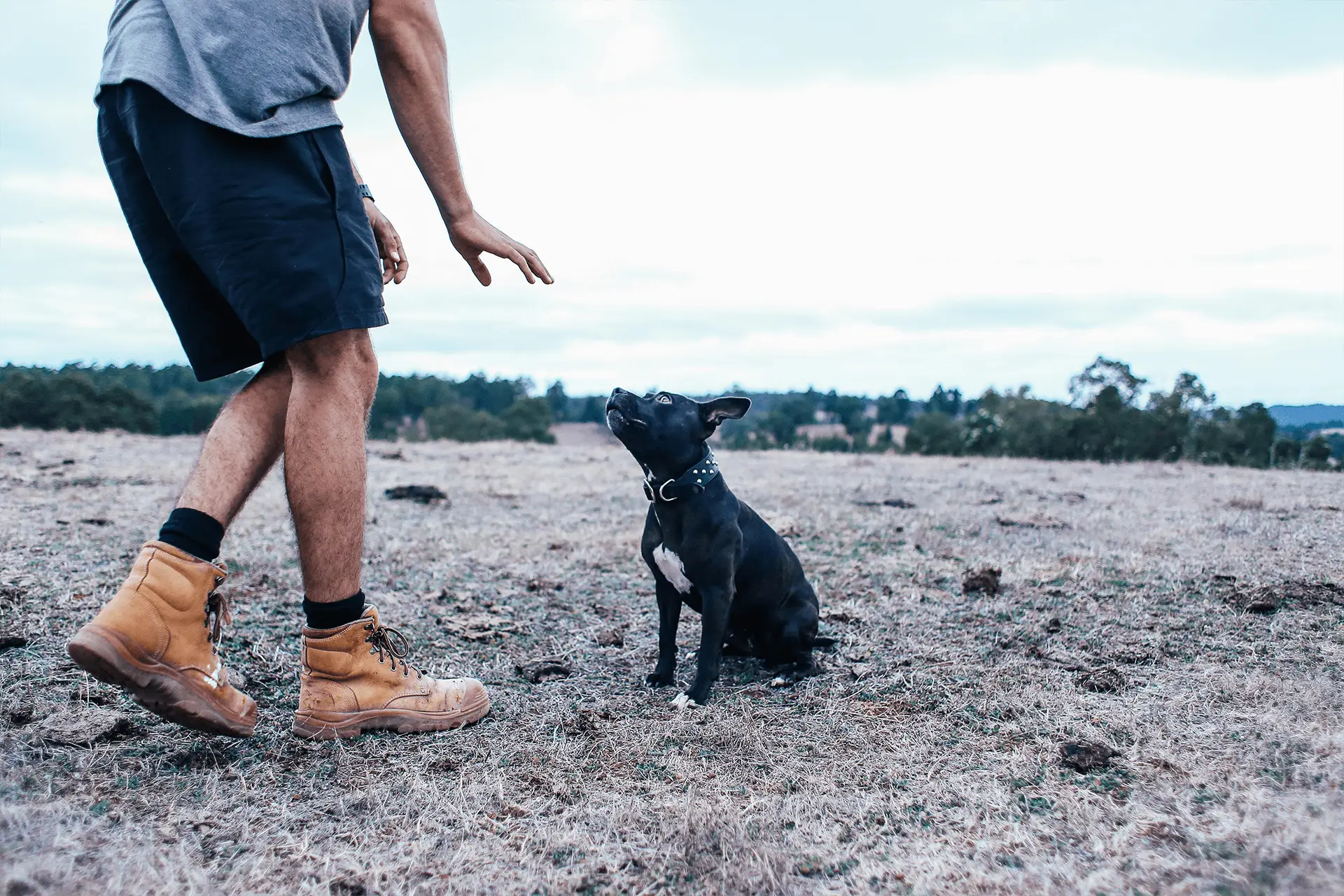The unconditional love from dogs adds the missing piece to your happiness. As a dog owner, you must give something in return. And that starts with paying close attention to your beloved pet’s behavior.
Certain dog behavior problems are common in all breeds and ages. The good news is that most of them can be resolved. How? By reading this guide.
In this article, we’ll highlight 5 common behavior issues and how you can address them with the right approach.
So, let’s get started!
What are the common Dog Behavior Problems & how to address them?
Here are the 5 behavior problems that need to be addressed as soon as possible:
1- Excessive Barking
No doubt dogs bark to communicate. But what if they do that constantly? It becomes a nuisance, right? And exactly that’s when dog owners have to face complaints from other people. So, this behavior may occur because of boredom, anxiety, or a lack of attention.
Solution
Training
The amazing thing in dogs is they obey their owners. You can teach them the “quiet” command and give them some rewards or praise when they stop barking.
Mental Stimulation
Because dogs need attention, when you leave them alone for an extended period, make sure to provide enough toys and activities to keep them busy.
Exercise
Dogs bark when they have high energy levels. That’s why you should give them daily exercise to help reduce their energy.
2. Chewing on Furniture or Personal Items
Chewing is a natural behavior in puppies and adult dogs. But imagine your dog starts chewing on your food during a family gathering. Won’t that be frustrating for you? It certainly would.
Solution
Provide Chew Toys
You can redirect their chewing behavior to specific items. To do this, you should invest in durable chew toys. Make sure the toys are suitable for their age and size.
Positive Reinforcement
A well-behaved pet deserves recognition. When your dog starts chewing on those specific toys, reward them with pats, treats, or special snacks.
Deterrents
Also, you can use a pet-safe deterrent spray to make furniture less appealing to chew on.
3. Separation Anxiety
Dogs love being around people because they are social animals. Therefore, many of them can suffer from separation anxiety when left alone. This dog behavior problem is of great importance.
Solution:
Gradual Desensitization:
Nothing happens overnight. You should slowly increase the amount of time your dog spends without you. With that, your dog will learn to be more independent.
Create a Safe Space
Everyone has their comfort zone, and so do animals. Build a comfortable space such as a crate or a room with their favorite toys and bed. This won’t make them sad when you leave them alone.
Interactive toys
Just like kids, dogs also enjoy playing with toys. So, giving them toys that keep them engaged will make the time spent stress-free while you’re not there. Try to leave toys that move or make a little noise because they can stimulate your dog’s curiosity to play with them.
4. Jumping on People
Along with running, dogs also like to jump on you when playing or greeting you. This gesture may seem cute when they’re small, but it can become problematic as they grow larger. Imagine your adult dog jumping on your guests, who may not appreciate it.
Solution
Training Commands
Teach them the “sitting” command when they run to greet you. Once they sit, give them a reward like a belly rub or a favorite toy. With this pet-sitting tip, you will help your dog learn self-control in exciting situations.
Consistency
Consistency is key. It’s important to be consistent in discouraging jumping. Also, make sure everyone in the household follows this rule.
Ignore the Behavior
When jumping, don’t respond to this behavior or reward it. As soon as they calm down and have all four paws on the ground, show affection and reward them.
5. Pulling on the Leash During Walks
Leash pulling is one of the most common behaviors that dogs exhibit. Although they may do it when they are excited or want to explore something, it can be bothersome to pedestrians.
Solution
Use Positive Reinforcement:
To stop this stressful act, you should go wisely. For example, give rewards when dogs walk calmly by your side. If they start pulling, don’t be angry with them; instead, stop walking and only resume when they’re calm down and the leash is loose.
Leash Training
Another solution is to use no-pull harness. This type of harness redirects the dog’s attention, showing them, this is the behavior what their owners don’t like. Many dog walkers in Ontario use this technique to ensure a calm and stable walk with their pets.
Practice Regularly
That being said, practice makes perfect, and this applies to animals too. Start practicing leash walking in quiet areas. Once you see improvement, gradually take walks in more crowded areas.

Conclusion
Every dog is unique, but they all share some common behavioral issues that need to be addressed in a timely manner. To help pet owners in such cases, this article mentions 5 common dog behavior problems along with practical solutions to manage them effectively.
Training a dog isn’t a one-night game—it requires patience, consistency, and positive reinforcement. With that approach, you’ll have a pet that every neighbor loves to play with.
If your dog is experiencing any additional issues, consider reaching out to a professional dog trainer or a vet early on.
Stay Tuned for More Dog Care Tips!
At Cute Pet Tips, we help pet owners care for their dogs—covering everything from behavior training to nutrition and beyond. Our insightful articles guide you in raising a well-behaved, happy, and healthy dog. For expert pet care tips in Ontario, follow our blog with just one click!
FAQs
Why does my dog bark nonstop, and how can I stop it?
Dogs bark excessively for many reasons like boredom, anxiety, or needing attention. To stop it, you can train them with the “quiet” command by rewarding them with treats, praise, and pats. Also, you can provide mental stimulation through toys. Lastly, you can give them daily exercise to reduce their energy level.
How can I stop my dog from chewing furniture or shoes?
You can redirect their chewing behavior to specific items, such as durable chew toys. To achieve this, you should reward them with dog-friendly treats, snacks, or praise when they chew on those toys.
How can I train my dog not to jump on people?
You can teach them the ‘sit’ command when greeting. Once they sit, reward them with treats or affection, such as a belly rub. Also, ignore jumping (no eye contact or touch) and only reward them once all paws are on the ground.
What’s the best way to stop my dog from leash pulling during walks?
Giving rewards when your dog walks calmly by your side is a wise move. If they pull, stop walking right away and resume when the leash is loose. Also, you can use a no-pull harness. For this, practice leash training in quiet areas first. Once you see improvements, take walks in crowded areas.








Great insights on common dog behavior problems! 🐶 Many dog owners struggle with issues like excessive barking, leash pulling, and separation anxiety, but your tips make training easier. Positive reinforcement and proper training can fix most dog behavior issues. Looking forward to more expert advice on dog behaviour problems and obedience training! #DogBehaviorProblems #DogTraining #PetCareTips
Such a helpful guide! I’ve been struggling with my dog’s excessive barking and chewing, so the solutions you provided are exactly what I needed. I’ll definitely try using the “quiet” command and offering more chew toys. The tips for leash pulling are great too! Looking forward to more advice like this, thank you for sharing!